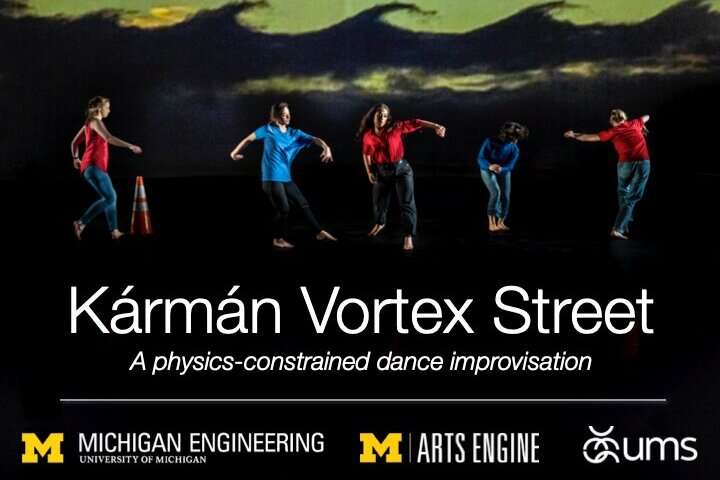Fluid dynamics taught through dance

A collaboration at University of Michigan is taking a unique approach to fluid mechanics by teaching it through dance. Fluid mechanics professor Jesse Capecelatro and choreographer Veronica Stanich, both from the University of Michigan, teamed up to create Kármán Vortex Street, a dance improvisation guided by physics properties.
"Social dances, such as tango, have a collection of rules that maintain structure, both collectively among all dancers and individually between pairs of dancers, that enable a coherent flow," said Capecelatro. "Examples include the specific connection and embrace between dancers, maintaining a line of dance, establishing an axis of rotation during turns, and so on. A similar set of rules exists in fluid mechanics."
Capecelatro will discuss what makes dance and mechanics such an unlikely but complementary pair at the Washington State Convention Center in Seattle at 8:39 am on Nov. 25. The talk is a part of the American Physical Society's Division of Fluid Dynamics 72nd Annual Meeting, which is one of the largest gatherings in the world for fluid dynamics.
Merging physics and choreography was tricky. Capelcelatro said he spent time teaching basic principles in fluid mechanics to the dancers.
"The difficulty comes in attempting to simultaneously capture the relevant physics while keeping the dance interesting and aesthetic to watch," he said. "In the end, we produced a 'physics-constrained improvisation,' in which Veronica had complete freedom over the structure of the dance as long as a certain set of 'rules' I provided were met."
Though the collaboration is still in its early stages, Capecelatro will also discuss how they plan to assess Kármán Vortex Street's impact on students understanding of fluid mechanics.
"The dance was filmed last winter, and I am currently working with a videographer at the University of Michigan to put it all together," said Capecelatro. "The goal is to produce a 5-8 minute educational video that demonstrates flow past a cylinder at varying Reynolds numbers through dance. The video will be available to the larger fluid dynamics community to use in the classroom."
More information: www.apsdfd2019.org/
Provided by American Physical Society



















